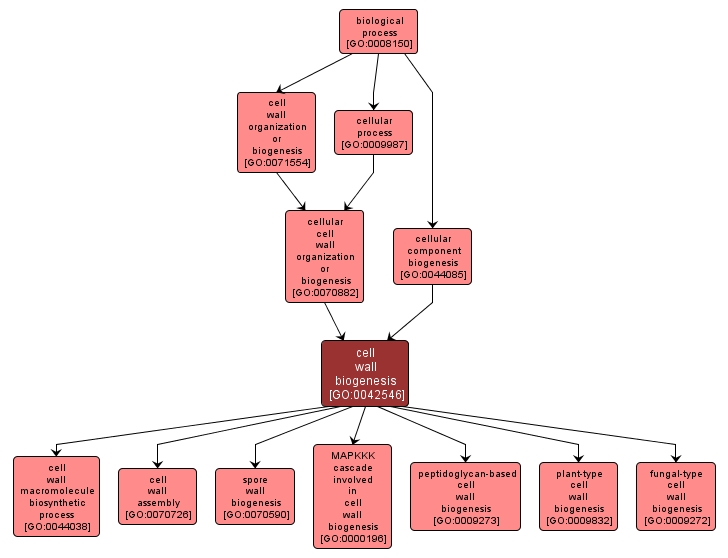| Desc: |
The process by which a cell wall is synthesized, aggregates, and bonds together. Includes biosynthesis of constituent macromolecules, such as proteins and polysaccharides, and those macromolecular modifications that are involved in synthesis or assembly of the cellular component. A cell wall is the rigid or semi-rigid envelope lying outside the cell membrane of plant, fungal and most prokaryotic cells, maintaining their shape and protecting them from osmotic lysis. |














